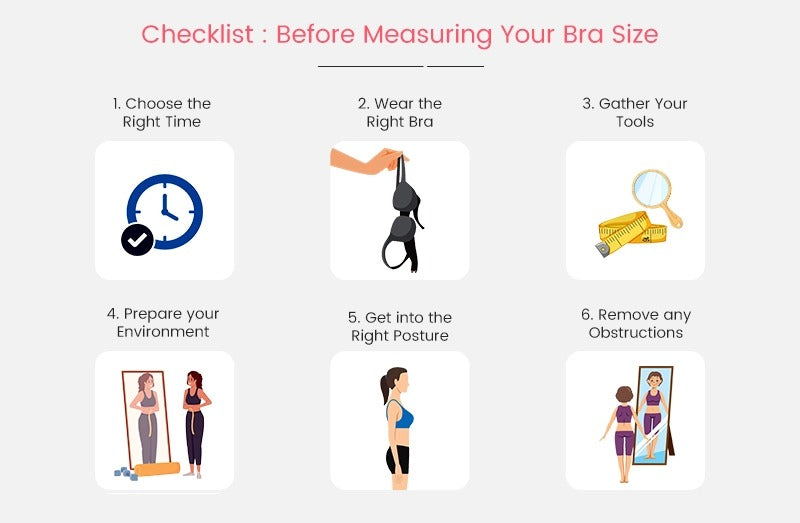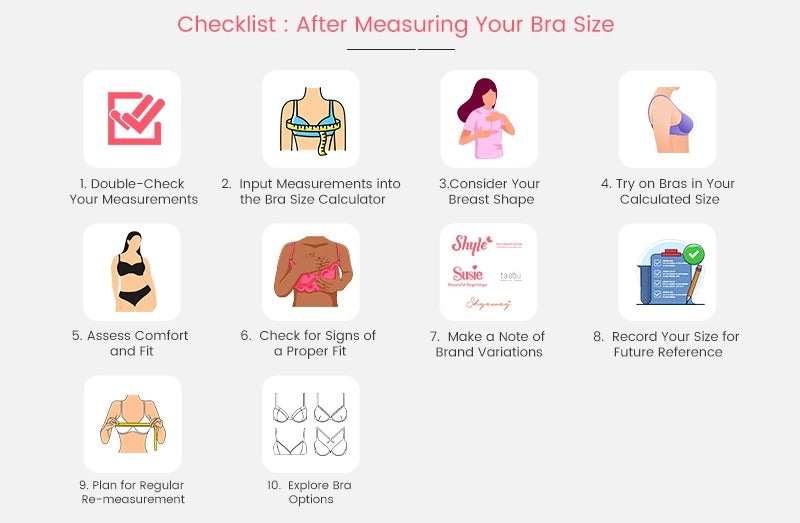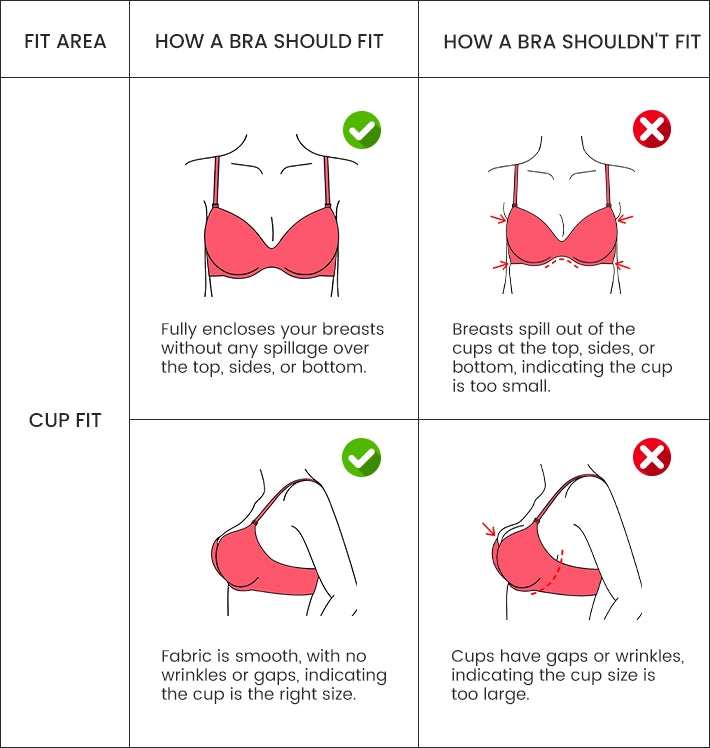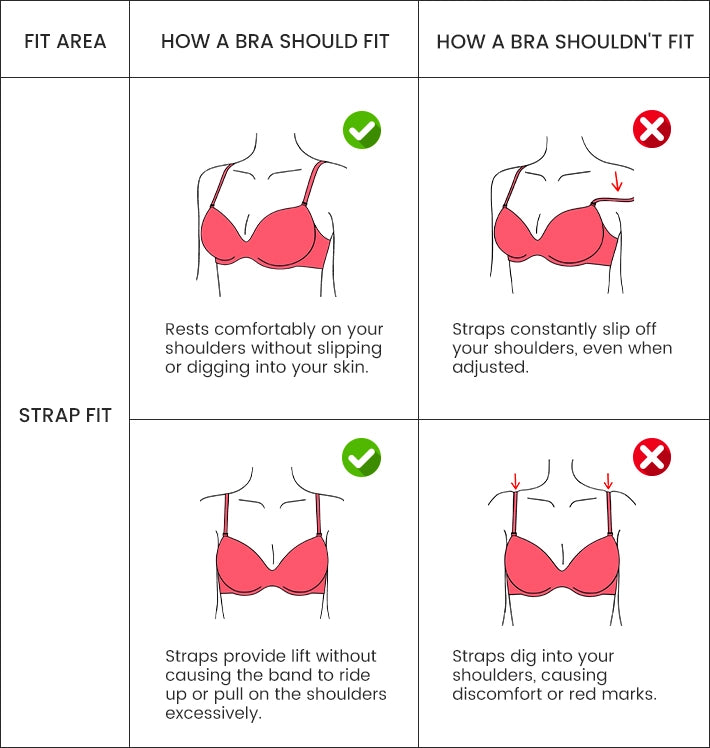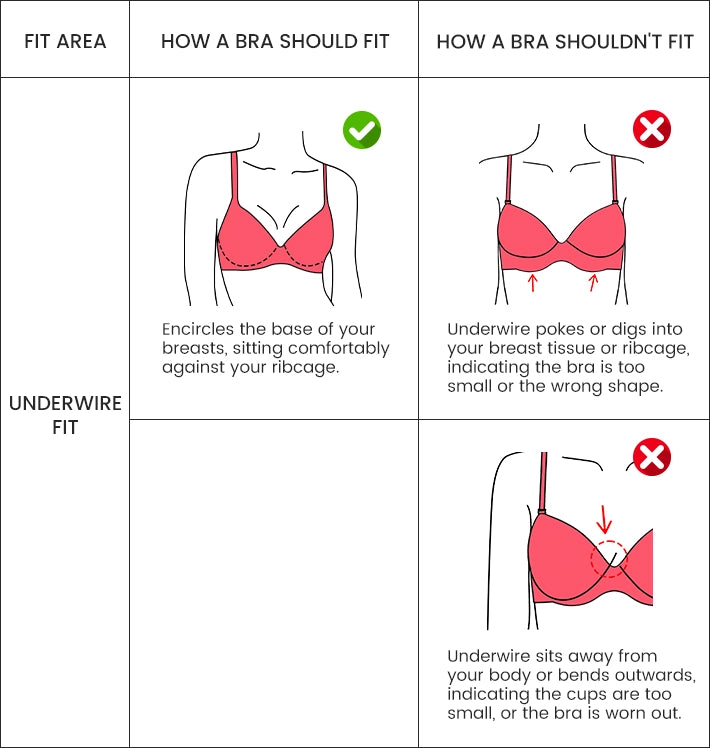LinMart
Measuring to Find your Correct Bra Size
Measuring to Find your Correct Bra Size
Couldn't load pickup availability
BRAS BY TYPE
Everyday Bras | T-Shirt Bras | Beginners Bras | Strapless Bras | Nursing Bras | Bralette Bras | Cami Bras | Fancy Bra | Minimiser Bras | Push Up Bras | Stick On Bras | Tube Bras
BRAS BY COLOR
Blue Bras | Green Bras | Grey Bras | Purple Bras | Red Bras | White Bras | Yellow Bras | Black Bras | Skin Bras | Brown Bras | Orange Bras | Pink Bras | Multicolor Bras
FAQs on Bra Size Calculator, Chart, and Measurements
1. How can I measure my bra size at home?
Measure your underbust and overbust using a measuring tape. Then, enter these measurements into our bra size calculator to determine your correct bra size.
2. What is the correct way to measure the underbust?
Wrap the tape snugly around your ribcage, just below your bust and note down the measurement.
3. How can I measure the bust size correctly?
You must measure around the fullest part of your breast, ensuring the tape is parallel to the ground and not too tight or loose.
4. What does the number in your bra size represent?
The number represents the measurement around your ribcage under the bust.
5. What does the letter in my bra size mean?
The letter represents the difference between your bust and underbust measurements, indicating the bra's cup size.
6. What is the difference between cup size & bra size?
Cup Size refers to the volume of your breasts and is represented by letters (e.g., A, B, C). The difference between your bust and underbust measurements determines it.
Bra Size combines your band size (the number) with your cup size (the letter) to give you a complete bra size (e.g., 34B).
7. Why should I use a bra size calculator?
A bra size calculator helps ensure you get an accurate size, leading to better support, comfort, and a flattering fit.
8. Can my bra size change over time?
Yes, factors like weight changes, pregnancy, and ageing can affect your bra size. It’s important to measure regularly.
9. How often should I recheck my bra size?
Measuring Your Bra Size Every Six Months or whenever you notice changes in your body is recommended.
10. What do I do if I'm in between sizes?
If you're in between sizes, it's generally best to try both sizes to see which one feels more comfortable. You can also consider the following tips:
For Band Size: If the band feels too tight, go up a band size and down a cup size (e.g., from 34C to 36B). If the band feels too loose, go down a band size and up a cup size (e.g., from 34C to 32D).
For Cup Size: If one size fits well in the band but the cups are too small or large, try the Sister Sizes to find the best fit.
11. What is a sister size in bras?
Sister sizes are alternate bra sizes with the same cup volume but different band sizes. For example, 34B, 32C, and 36A are sister sizes.
12. Why do my bra straps keep slipping?
Slipping Straps can indicate that your band is too loose or your straps need adjustment. Consider tightening the straps or choosing a smaller band size.
13. What should I do if my bra band rides up?
A Band That Rides Up is usually too loose. Try fastening your bra on a tighter hook or opt for a smaller band size.
14. How do I know if my bra fits correctly?
Your bra should lie flat against your chest, the band should be level, and the cups should fully encase your breasts without gaps or spillage. Importantly, you should feel comfortable throughout the day.
15. Can I use this bra size calculator for all bra brands?
Yes, but keep in mind that sizing can vary slightly between brands. Our calculator provides a good estimate across various brands.
16. What are the consequences of wearing the wrong bra size?
Wearing the wrong size can lead to discomfort, poor posture, and potential skin irritation or marks.
17. How to find the right bra for your breast shape?
Here are the breast shapes and the recommended bra styles.
- Round Breasts: Full-coverage or balconette bras work well to prevent spillage.
- Teardrop Breasts: Demi-cup or plunge bras offer a natural lift.
- East-West Breasts: Side support or T-shirt bras help centre the breasts.
- Asymmetrical Breasts: Bras with removable padding balance the difference.
- Athletic Breasts: Push-up or lightly padded bras add volume.
- Bell-Shaped Breasts: Full-coverage or deep-cup bras provide support.
- Slender Breasts: Plunge or balconette bras create a fuller shape.
- Relaxed Breasts: Balconette or underwire bras offer lift.
- Side-Set Breasts: Plunge or push-up bras bring breasts closer together.
- Full-on-Top Breasts: Balconette or stretch-lace bras prevent overflow.
18. How can I find my bra size without a measuring tape?
You can visit our store to get help from our bra fitting experts.
19. When should I replace my bras?
You should replace your bras every 6 to 12 months, depending on how often you wear them. Signs it’s time to replace include stretched-out bands, loose straps, worn-out fabric, and underwire poking out. If your bra no longer provides the support and comfort it once did, it’s time for a new one.
20. How should I take care of my bras?
Hand wash your bras in cold water and air dry them to maintain their shape and elasticity. Rotate bras to allow the elastic to recover, and store them carefully to avoid crushing the cups.
